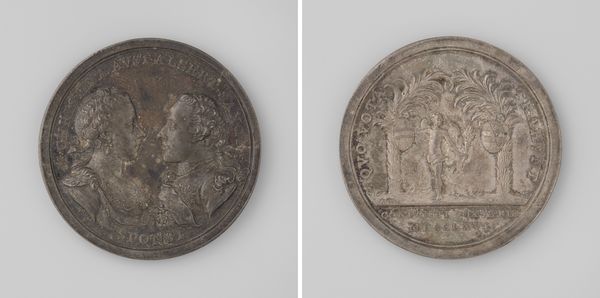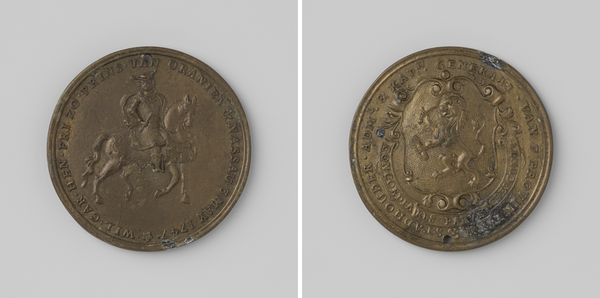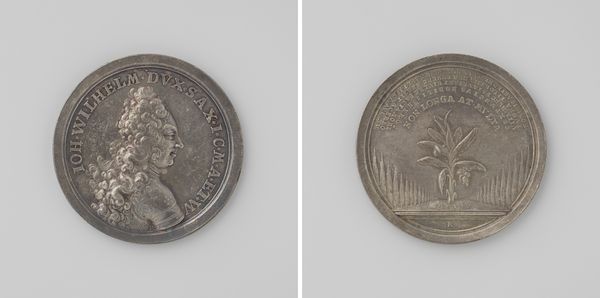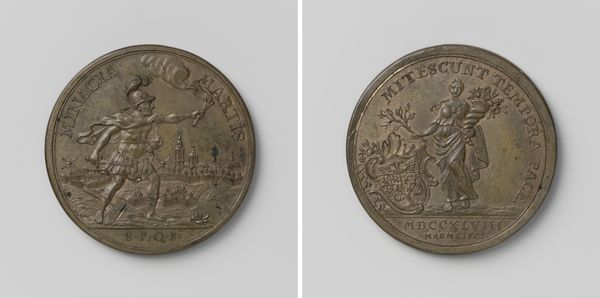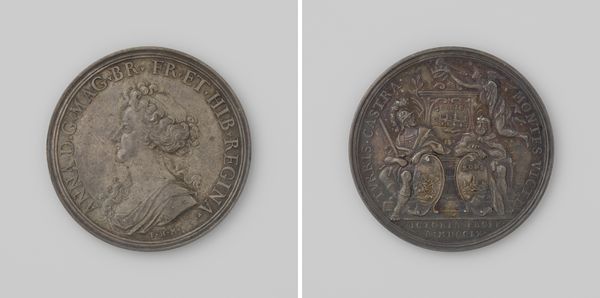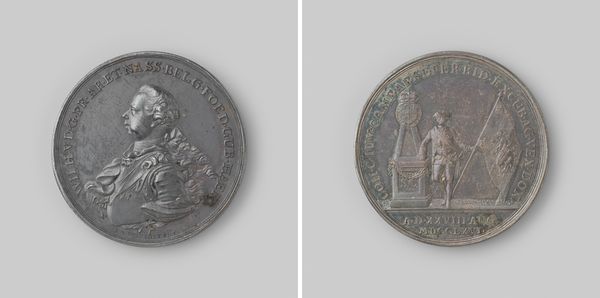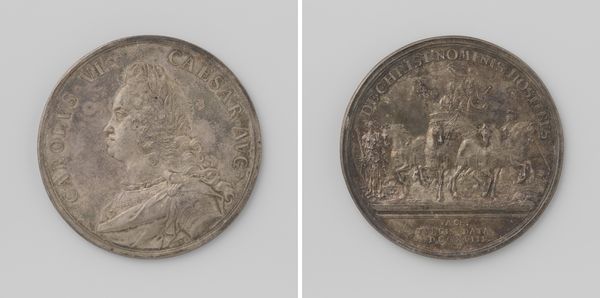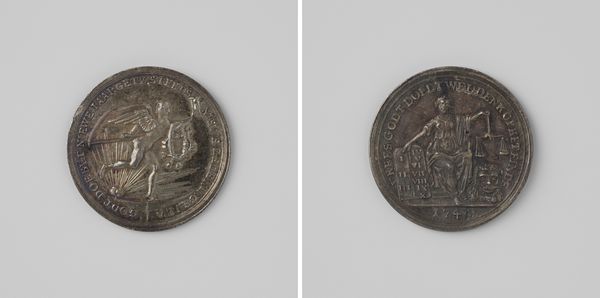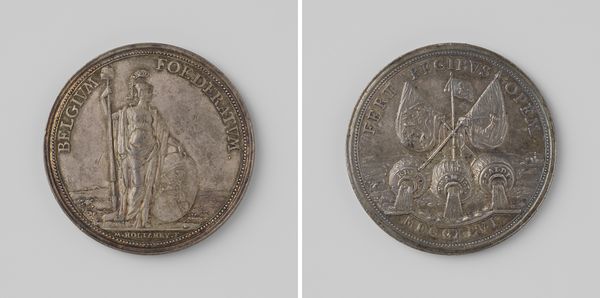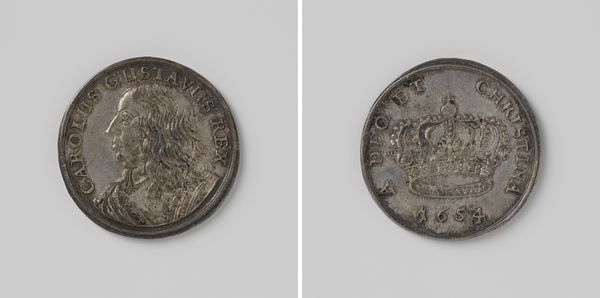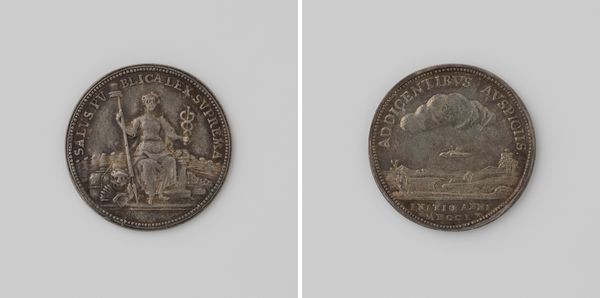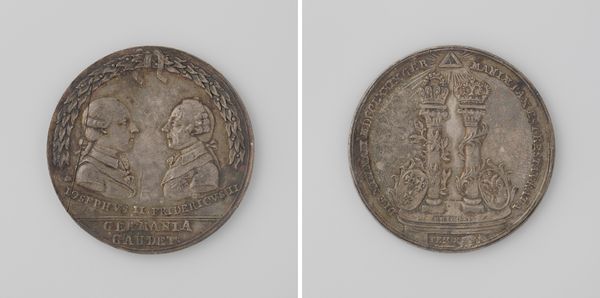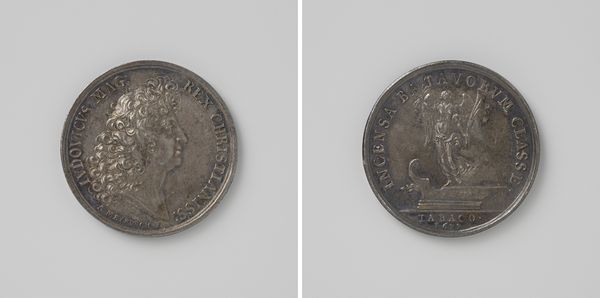
metal, sculpture, engraving
#
medal
#
baroque
#
metal
#
sculpture
#
sculpture
#
engraving
Dimensions: diameter 3.4 cm, weight 14.78 gr
Copyright: Rijks Museum: Open Domain
Curator: This baroque medal, “Aanvang van het jaar 1760,” or “Beginning of the year 1760”, was created by Johan George Holtzhey. Currently held at the Rijksmuseum, this metal and engraved sculpture offers a glimpse into the historical narrative through art. Editor: My first impression is somber. The metallic material coupled with the muted tones, really gives it a grave feeling. The imagery on each side adds to that as well. Curator: Indeed. One side features a seated figure, perhaps representing a Republic or State, holding what looks to be a scepter and caduceus, symbolic of power and negotiation. The figure seems to sit upon a lion, commonly connected to the Dutch Republic at the time. I imagine it's an expression of health and public safety, emphasized by the inscription "SALVS PVBLICA LEX SVPREMA." Editor: The inscription affirms that. It implies something far more interesting about societal concerns during that time. Is the representation of power intended to offer solace, perhaps addressing anxieties or upheavals? The other side shows what appears to be devastation in the land; a visual response, perhaps, to economic or political realities? Curator: That reverse side shows some sort of atmospheric disturbance over the countryside. The inscription reads “ADFICIT DVEUS INSECTIS”, indicating divine intervention or the punishment of insects, which I assume means anything from pests to enemy nations. The visual imagery connects the suffering of the common citizen directly to higher powers. Editor: What about the date, “INITIO ANNI MDCCLX” – the beginning of the year 1760 – is interesting. Why begin a year seemingly commemorating some devastation? Why strike a medal for it? It could have been intended as a reminder, not of defeat but of endurance. The visual contrast is quite powerful. Curator: The visual programs are very dynamic. By focusing on emblems like the lion, caduceus and divine omens, Holtzhey uses those traditional allegories to highlight cultural narratives. There is that desire to root society into the grand scale of events and ideas. The work shows us our universal human themes, such as governance, society, suffering, and human attempts to establish order. Editor: To look at such work lets me consider how a society can construct meaning in chaotic times by representing power, resilience, or warnings—especially on such small scales of production.
Comments
No comments
Be the first to comment and join the conversation on the ultimate creative platform.
